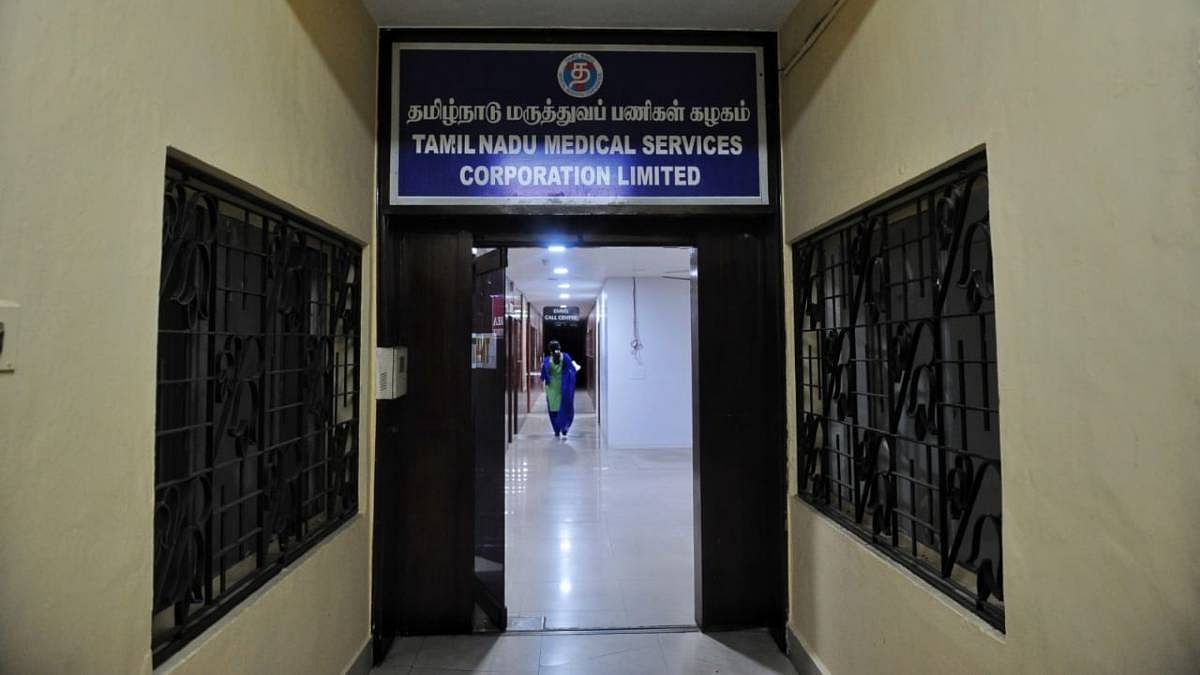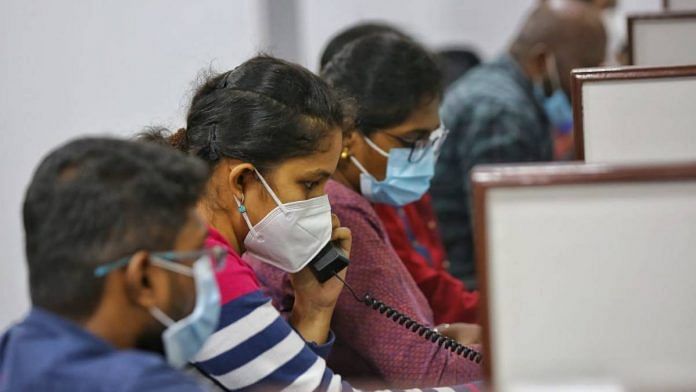Chennai: The phone rang in Chennai’s oxygen ‘war room’, instantly putting everyone on alert. A hospital in Thoothukudi, a Tamil Nadu town, was running low on the life-saving gas. A truck carrying oxygen cylinders to the hospital had been delayed.
A quick meeting took place between in-charge Anusuiya S, drug inspector Sharmila and others present, and a course of action was decided upon. Sharmila made a call to a police control room near the hospital, which saw the police immediately swing into action and escort the oxygen-carrying truck to the hospital.
The oxygen control room — set up in the Tamil Nadu Medical Services Corporation building in Chennai — was made operational on 6 May. The aim: Create a smooth access chain for oxygen for hospitals treating Covid patients in the state, so that a “Delhi-like situation can be averted”, state health officials said.
The shortage of medical oxygen for Covid patients in the national capital has become the benchmark of a crisis that Tamil Nadu does not want to witness.
Whenever a hospital is low on oxygen supply, it reaches out to the control room for help. While the team is always ready to firefight emergencies, late nights — between 8pm to 10am — are the busiest. It’s then the war room’s responsibility to not just contact suppliers, but also coordinate with the police to ensure that oxygen cylinders are given a ‘green corridor’ for quick transport and delivery.
Also read: TN & Andhra SOS to PM, Kerala’s surplus stock over — Oxygen shortage now hits South India
Keeping tab on hospitals
When ThePrint visited the war room between 5pm-7pm Thursday, Saranya Sri, a dentistry post graduation student is hard at work. The 25-year-old’s job is to ensure that all hospitals give the war room an update on their oxygen status every four hours. This is to give the state command real-time data on oxygen availability in the state’s hospitals.

“I have to periodically follow up with hospitals and check if they have adequate reserves. Since I cannot bother healthcare workers every few hours, I wait for them to send us an update. In case there is a delay I make calls. At any given time, at least 75 per cent of the list should be updated,” she explained.
Saranya is a part of a six-member team working the 1pm-8 pm shift at the control room.
Dr L. Parthasarathy, the head of anaesthesia department at the Government Multi Super Speciality Hospital in Chennai, also works at the state oxygen control room. Talking to ThePrint, he said, “There are three kinds of hospitals that we are catering to — small nursing homes, private hospitals and government hospitals — totalling about 200 in number. Usually, big private hospitals have contracts with oxygen suppliers, but smaller nursing homes do not have that kind of access.”
The need to ensure that these don’t run out of oxygen is important, said Parthasarathy, “since Covid has now reached rural areas and most of the people [there] get admitted in the smaller nursing homes in their area. It is important that they have proper access to oxygen supply. In addition to this, their usual oxygen suppliers may not be of help owing to the lockdown. We ensure that their oxygen cylinders are refiled,” he said.
Also read: How medical oxygen is supplied to hospitals, and why India is facing an acute shortage
On high alert
Although officials are always alert, they say 8 pm to 10 am are the busiest hours. Most ‘red alerts’ pop up during these hours.
As soon as a ‘red alert’ is sent to the control room, the team makes a quick analysis of the hospital’s oxygen usage pattern.
A call is then made to the nearest supplier. Even as the oxygen is being loaded for transportation, the control room calls the police of that district, who then escort the oxygen-carrying truck via roads identified as a ‘green corridor’.
All of this happens within 20 minutes after a phone call is made to the control room.
Anusiya, the nodal officer in-charge of the control room, explained, “The teams work in three shifts. Each shift has three medical officers, one data entry operator, one drug inspector and one DMS coordinator. Supervisors like myself have to work round the clock.”
Her explanation is stopped mid-sentence as the telephone rings to announce another SOS call — a hospital in Ranipet district had run out of oxygen and needed 30 cylinders refilled. The cycle of meetings, discussions and phone begins.
(Edited by Poulomi Banerjee)
Also read: Are oxygen concentrators essential commodity? Two Delhi courts think differently



